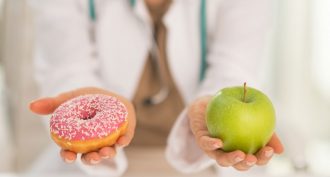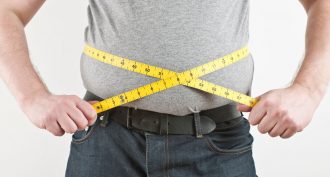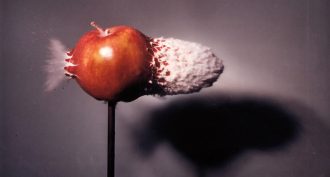

All Stories by Kathryn Hulick
-
 Health & Medicine
Health & MedicineTeens eating better but gaining weight
From 1999 through 2012, teens got heavier. But by downing less sugar and eating more healthy fats, their bodies also showed signs that these teens were somewhat healthier.
-
 Health & Medicine
Health & MedicineExplainer: What is metabolic syndrome?
A “couch potato” lifestyle of too much sugary, fatty food and too little exercise leads to health problems. This is known as metabolic syndrome.
-
 Health & Medicine
Health & MedicineMinty fresh zits treatment?
Some nontraditional acne treatments work at cleaning up pimples.
-
 Health & Medicine
Health & MedicineExplainer: What is skin?
The body’s soft, outer armor contains three layers, each with its own important role to play.
-
 Health & Medicine
Health & MedicineThe truth about zits
A common bacterium called P. acnes usually helps keep the skin healthy. But under some conditions, and especially during puberty, it can trigger painful, embarrassing outbreaks of unsightly pimples.
-
 Animals
AnimalsDo dogs have a sense of self?
Dogs don’t know their own reflections in a mirror, but they do recognize themselves from the scent of their own urine, a new study finds.
-
 Animals
AnimalsSome otters wear red algae
Some sea otters in California sport coats of red algae. A new study finds the species most likely is a non-native organism from half a world away.
-
 Tech
TechEngineers consider liquid salt to generate power
A new type of power plant, a molten salt reactor, might provide electricity in a cleaner and safer way than current nuclear technology.
-
 Chemistry
ChemistrySome 3-D printing can leave toxic taint
The ”ink” inside some 3-D printers can leave toxic traces. In tests, these chemicals harmed baby fish. But lighting could render the parts safer.
-
 Microbes
MicrobesSlime cities
Biofilms are like tiny cities of bacteria — some harmless, others destructive. Scientists are learning how to keep these microscopic metropolises under control.
-
 Animals
AnimalsRare as a rhino
Most species are rare. Some have always been rare. A problem develops when people are responsible for accelerating a species’ rarity to the point that extinction threatens.
-
 Physics
PhysicsX-ray ‘eyes’
Movie directors often make “short” subjects, flicks running sometimes just a few minutes or so. But scientists have begun making much quicker “shorts,” essentially nanofilms. Their goal: catching science in action.